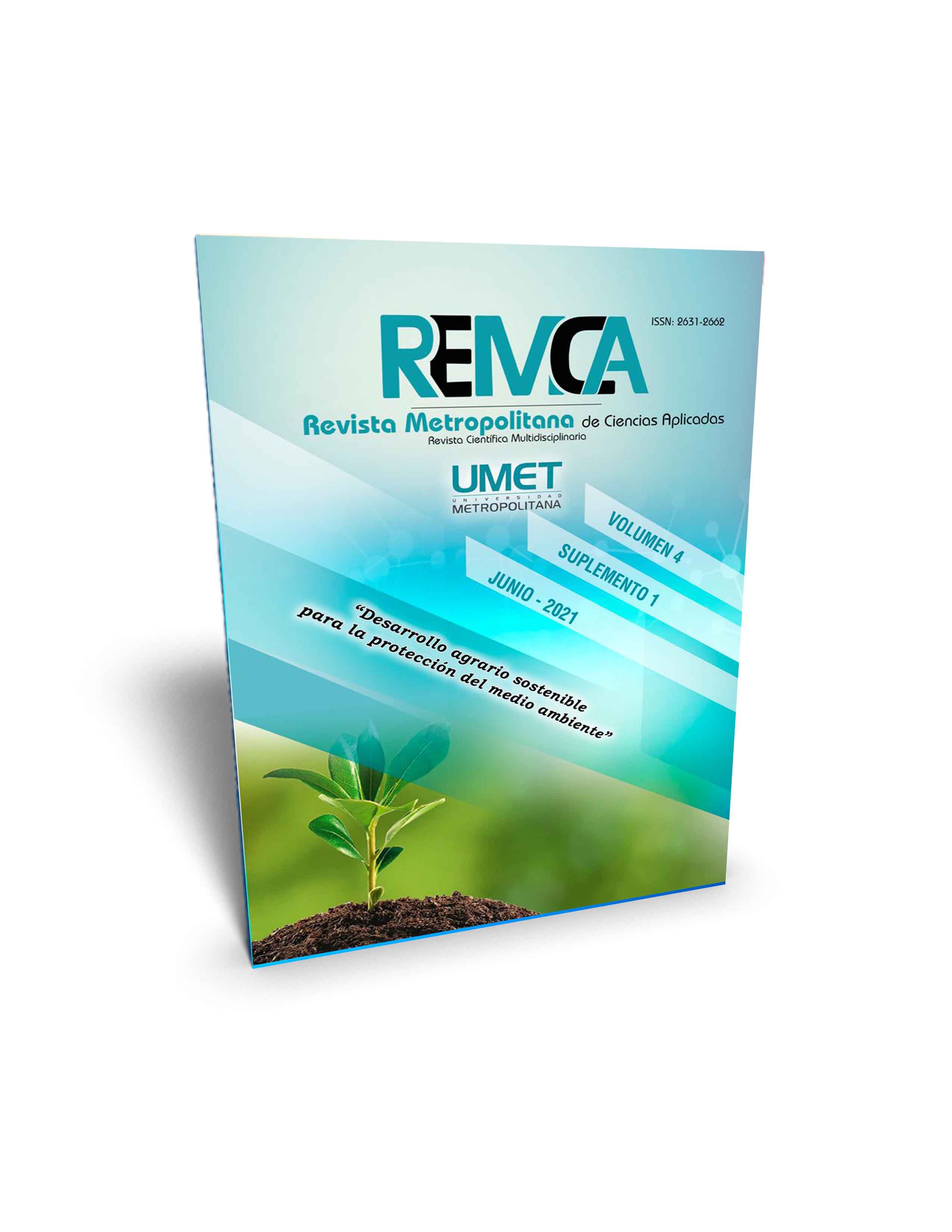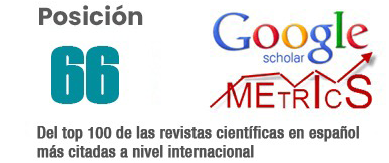Use of bioorganic products to increase the yield of the tomato crop (Lycopersicum sculentum Mill)
DOI:
https://doi.org/10.62452/hpp71a23Keywords:
Bioorganic, fortified liquid humus, Bayfolan Forte and Fitomas EAbstract
The investigation was carried out in the property Los Ángeles belonging to the Cooperative of Credits and Services Hugo Camejo in the municipality of Camagüey on a low and fairly deep typical Grizzly Brown floor of natural fertility, having as objective the employment of the products bioorganic to increase the yield in the cultivation of the tomato variety Botijón in the productive unit. The used experimental design was randomized block with six treatments and four replicas, for the analysis of variance of simple classification the statistical package SPSS version was used 11. 5.1 and where there was significance the test of multiple ranges of Duncan it was applied for a level of significance of 0,05%, being the evaluated indicators the height of the plant, grosor of the shaft, perimeter of the fruit, number of fruits and agricultural yield. The best obtained results were in the treatments represented by fortified liquid humus, Bayfolan Forte and Fitomas E, los which don't differ among them but yes with relationship to the rest, what demonstrates that the use of these products bioorganic constitutes alternative agroecological that allow an agricultural sostenibility and a better care of the environment.
Downloads
References
Armas, M. (2017). Efecto de alternativas bioorgánicas en el comportamiento agronómico del frijol (Phaseolus vulgaris L.). (Trabajo de diploma). Universidad de Camagüey.
Borrero, Y. (2005). Efecto del bioestimulante Fitomás-E en el cultivo del tomate (Lycopersicum esculentum Mill) variedad (T4) de cultivo protegido. Cultivos Tropicales, 16(3), 5-8.
Breceda, A., & Vázquez, R. (2012). Desertificación, ganadería y agricultura. En, I. Antonina y A. E. Gámez (eds.), Plan Estatal de Acción Ante el Cambio Climático para Baja California Sur. (pp. 94-98). PEACC-BCS.
Cárdenas, Y. (2017). Alternativas bioorgánicas en el cultivo de la zanahoria (Daucus carota var. sativa) en un huerto intensivo. (Trabajo de diploma). Universidad de Camagüey.
Castillo, Y. (2014). Empleo de productos estimuladores en la nutrición del cultivo del tomate variedad HA- 3019. (Trabajo de diploma). Universidad de Camagüey.
Chapman, E. (2015). Influencia de la aplicación de potenciadores bioorgánicos sobre el cultivo del frijol (Phaseolus vulgaris, L). (Trabajo de diploma). Universidad de Camagüey.
Cisneros, B. E. (2013). Evaluación agroproductiva del frijol variedad Delicia Rojo 364 empleando los sistemas bioorgánicos de fertilización en una finca agroecológica. (Trabajo de diploma). Universidad de Camagüey.
Cuba. Instituto de Suelos. (1975). II Clasificación Genética de los Suelos de Cuba. MINAG.
Cuba. Ministerio de la Agricultura. (2010). Guía Técnica para la producción del cultivo del tomate. Editora Agroecológica. Agroecológica.
Dibut, B., Martínez, R., Ortega, M; Ríos, Y., & Fey, L. (2010). Obtención de un biofertilizante mixto de amplio espectro de acción. Efecto sobre el cultivo de la rosa (Rosa spp.). Agrotecnia de Cuba, 34(1), 33-43.
Fontes, B. (2018). Efecto de los bioestimuladores del crecimiento vegetal en el cultivo de la zanahoria (Daucus carota var.sativa). (Trabajo de diploma). Universidad de Camagüey.
Lagler, J. C. (2017). Bioinsumos: distintas percepciones haciendo foco en la fertilización biológica. Agronomía & Ambiente, 37(1).
León, M., & Mesa, C. (2016). Producción de soya en Cuba: su impacto en el desarrollo local. En, J.L. Ramos-Ruiz, et al. (Eds), El Gran Caribe en contexto. (pp. 134-163). Universidad del Norte.
López, P., & Montejo, J. L. (2012). Empleo de alternativas bioorgánicas en la granja urbana y suburbana del municipio Camagüey. (Ponencia). Evento Provincial de Calidad. Camagüey, Cuba.
Organización de las Naciones Unidas para la Alimentación y la Agricultura. (2009). Anuario Estadístico. FAO.
Pineda, L. (2019). Efecto de bioestimuladores del crecimiento y desarrollo vegetal en el cultivo del frijol (Phaseolus vulgaris, L) var. CC 25-9 N. (Trabajo de diploma). Universidad de Camagüey.
Tan, O. (2019). Empleo de bioestimuladores del crecimiento y desarrollo vegetal en el cultivo del tomate (Solanum lycopersicum. L) en la finca El Huerto. (Trabajo de diploma). Universidad de Camagüey.
Vázquez, L., & Funes, F. (2014). Preguntas y respuestas sobre agricultura sostenible. Biblioteca ACTAF. Editora Agroecológica.
Viamontes, Y. (2019). Efecto de alternativas bioorgánicas en la respuesta agronómica del cultivo de la cebolla (Allium cepa. L) en la finca Los Ángeles. (Trabajo de diploma). Universidad de Camagüey.
Downloads
Published
Issue
Section
License
Copyright (c) 2021 Yasmelkis Morales Nicolau, Pedro Jesús López Labarta, José Luis Montejo Viamontes, Pavel Chaveli Chávez, Delmys Triana González (Autor/a)

This work is licensed under a Creative Commons Attribution-NonCommercial-ShareAlike 4.0 International License.
Authors who publish in Revista Metropolitana de Ciencias Aplicadas (REMCA), agree to the following terms:
1. Copyright
Authors retain unrestricted copyright to their work. Authors grant the journal the right of first publication. To this end, they assign the journal non-exclusive exploitation rights (reproduction, distribution, public communication, and transformation). Authors may enter into additional agreements for the non-exclusive distribution of the version of the work published in the journal, provided that acknowledgment of its initial publication in this journal is given.
© The authors.
2. License
The articles are published in the journal under the Creative Commons Attribution-NonCommercial-ShareAlike 4.0 International License (CC BY-NC-SA 4.0). The terms can be found at: https://creativecommons.org/licenses/by-nc-sa/4.0/deed.en
This license allows:
- Sharing: Copying and redistributing the material in any medium or format.
- Adapting: Remixing, transforming, and building upon the material.
Under the following terms:
- Attribution: You must give appropriate credit, provide a link to the license, and indicate if any changes were made. You may do this in any reasonable manner, but not in any way that suggests the licensor endorses or sponsors your use.
- NonCommercial: You may not use the material for commercial purposes.
- ShareAlike: If you remix, transform, or build upon the material, you must distribute your creation under the same license as the original work.
There are no additional restrictions. You may not apply legal terms or technological measures that legally restrict others from doing anything the license permits.




